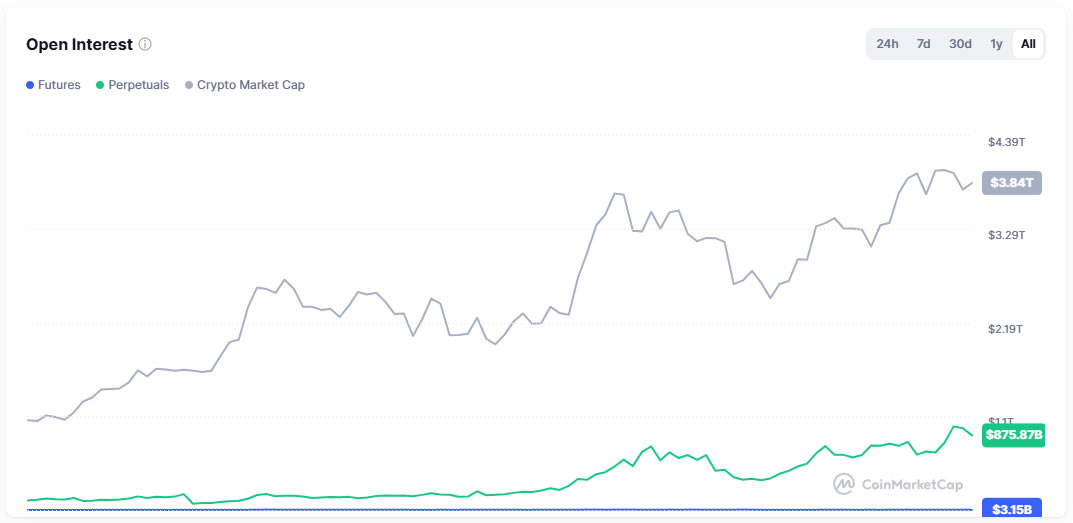Cboe continuous futures are long-dated, cash-settled Bitcoin (BTC) and Ether (ETH) contracts with a 10-year expiry that launch Nov. 10 pending regulatory approval; they mirror perpetual-style utility while offering regulated, transparent funding and simplified position management for US traders.
-
10-year cash-settled BTC and ETH contracts launching Nov. 10 (pending approval)
-
Single long-dated contracts reduce rollovers and simplify position management for traders.
-
Perpetual-style trading dominates crypto volumes: perps account for 68% of Bitcoin trading volume in 2025, and crypto perpetuals show high open interest (Crypto perpetuals open interest is $876 billion, source: CoinMarketCap).
Cboe continuous futures launch 10-year cash-settled BTC & ETH contracts on Nov. 10 pending approval; read launch details, settlement mechanics, and trading tips.
What are Cboe continuous futures for Bitcoin and Ether?
Cboe continuous futures are single, long-dated futures contracts for Bitcoin and Ether with a 10-year expiration designed to reduce rollover and replicate perpetual-contract convenience within a US-regulated framework. They are cash-settled and use transparent funding to align with spot prices.
How are these contracts cash-settled and priced?
Cboe’s continuous futures will be cash-settled and aligned to spot prices using transparent funding rates and settlement processes. The design mirrors perpetual contracts common in decentralized finance and offshore venues but operates on a regulated futures exchange. Market data provider Kaiko reports that perpetual-style contracts accounted for 68% of Bitcoin trading volume in 2025. Crypto perpetuals show significant open interest (Crypto perpetuals open interest is $876 billion, source: CoinMarketCap), underscoring market appetite.
How will Cboe’s continuous futures change US crypto derivatives trading?
Cboe’s launch introduces perpetual-style utility onto a US-regulated futures exchange, offering traders a long-dated contract that reduces the operational friction of rolling positions. Catherine Clay, Global Head of Derivatives at Cboe, said the exchange is bringing perpetual-style utility to a US-regulated venue, reflecting growing institutional interest and structural evolution in crypto derivatives.

Crypto perpetuals open interest is $876 billion. Source: CoinMarketCap
How to trade Cboe continuous futures?
Traders should prepare by understanding contract specifications, margin requirements, and funding mechanics. Follow these steps:
- Confirm regulatory approval and official contract specifications with your clearing broker or platform.
- Review margin and risk parameters for the 10-year cash-settled contract.
- Monitor funding rates and spot alignment to manage basis and carry costs.
- Use position-sizing and risk controls appropriate for long-dated exposures.
- Consider liquidity and hedging strategies, given evolving market adoption.
Frequently Asked Questions
Will Cboe continuous futures require periodic rolling?
No. The 10-year single-contract structure is designed to reduce frequent rollovers; traders can hold positions longer without periodic contract roll, although funding mechanics will still apply to align to spot.
Who has offered perpetual-style products in the US so far?
Bitnomial launched the first US perpetual futures contracts in April, followed by Coinbase with nano Bitcoin and nano Ether perpetual futures in July. These launches predate Cboe’s long-dated continuous futures announcement.
Key Takeaways
- Cboe introduces regulated long-dated perps: 10-year cash-settled BTC and ETH contracts aim to reduce rollover complexity.
- Market context: Perpetual-style contracts dominate crypto volumes (Kaiko) and show high open interest (CoinMarketCap data).
- Trader action: Verify specs, understand margin and funding, and prepare hedges before trading.
Conclusion
COINOTAG reports that Cboe continuous futures represent a notable shift in US crypto derivatives by packaging perpetual-style utility into a 10-year cash-settled contract. The Nov. 10 launch (pending approval) could streamline position management for traders while increasing regulated market depth. Monitor official Cboe specifications and regulatory updates for next steps.
